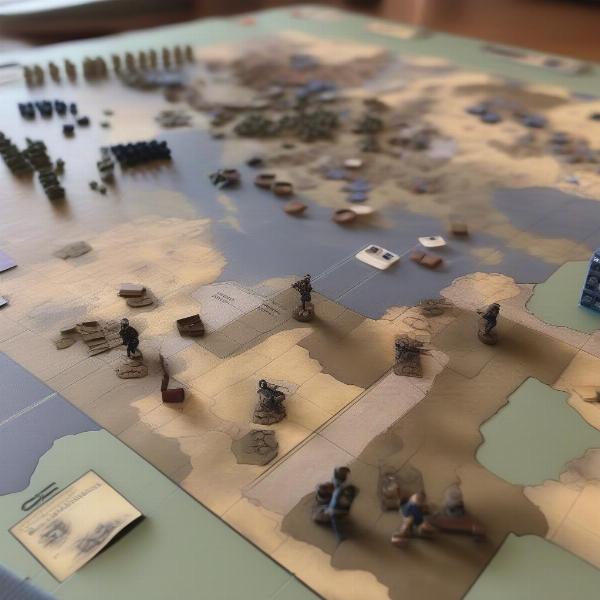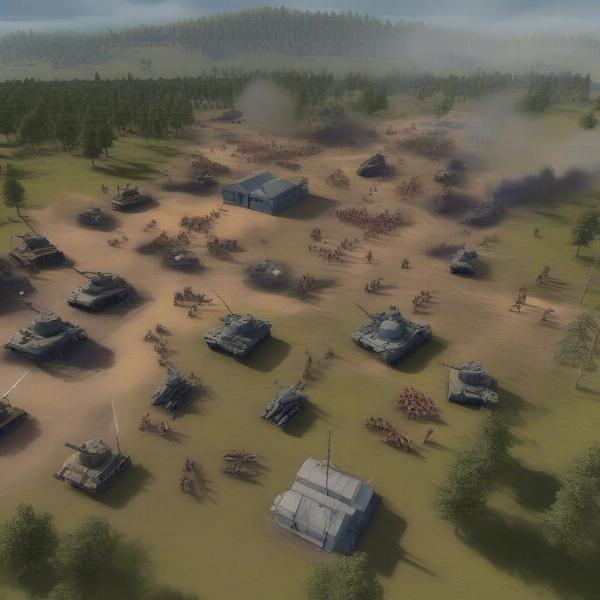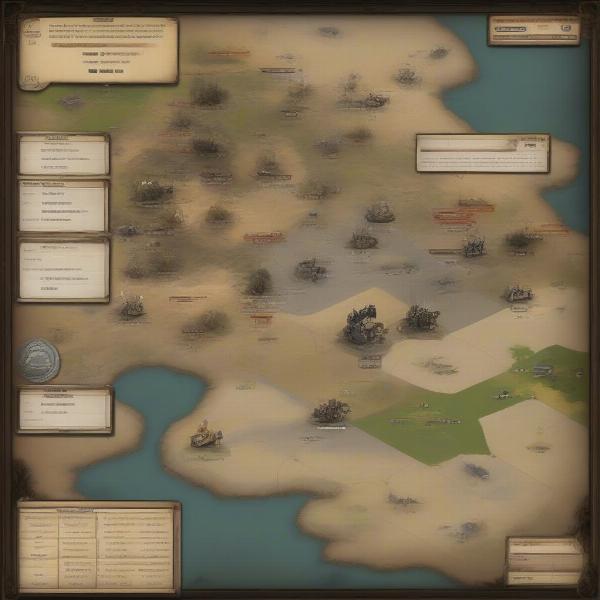The question of “Where Did The Civil War Game Play” originates from the desire to understand how games centered on the American Civil War have developed over time. At SupremeDuelist.blog, we explore this evolution, tracing the roots of these strategy and simulation titles and examine how they have evolved from tabletop and early PC games to today’s complex and immersive experiences. This article will delve into the key eras and milestones that shaped the civil war game landscape.
We will explore the various approaches developers have taken to capturing the challenges of the American Civil War, from early wargames emphasizing tactical combat to more recent titles that delve into the social and political aspects of the conflict. We’ll also look at how player expectations have evolved, and how developers have responded to these shifts with more engaging gameplay and intricate historical detail.
Early Board Games and the Genesis of Civil War Strategy
Before the advent of video games, the seeds of civil war game play were sown in the realm of tabletop board games. Games like Gettysburg by Avalon Hill, released in 1958, represent an early attempt to model the complex maneuverings of Civil War battles. These were not your typical family games; they required players to study battle maps, learn the capabilities of different military units, and make tactical decisions that could determine the outcome of engagements. The game also focused on the challenge of logistics, something that was a key factor in the war.
These board games laid the groundwork for later games by introducing elements such as turn-based play, unit counters representing different military formations and terrain effects on unit movement and combat effectiveness. In these games, players had to understand the implications of terrain for troop movements. These mechanics, which are still found in many digital strategy titles today, helped simulate the tactical and strategic difficulties faced by commanders during the war. If you are looking for games that focus on similar levels of strategy, you might enjoy exploring games similar to empire at war.
 civil war map table-top
civil war map table-top
The Transition to Early Computer Games
The move to personal computers in the 1980s opened up new opportunities for civil war games. Early computer titles such as North & South, from 1989, brought the conflict to the digital screen, often presenting it through a more accessible arcade-style format. While graphics were relatively primitive compared to modern standards, they offered an exciting new way to experience the Civil War, combining elements of strategy with simple action sequences.
These games, though more simplified compared to later simulations, began to address broader strategic considerations of the conflict. Players often managed resource allocation alongside army movements. This offered a glimpse of the larger scope of the war. In the early days of gaming, developers also experimented with different perspectives, often giving players control of Union or Confederate forces, exploring varied approaches to gameplay.
The Rise of Real-Time Strategy and Grand Strategy Civil War Games
As technology advanced, the 1990s witnessed the emergence of more advanced real-time strategy and grand strategy games. Titles like Sid Meier’s Gettysburg allowed players to command large armies in real-time battles, and were a leap forward in terms of complexity and depth of simulation. These games brought to life the chaotic nature of Civil War battlefields, with hundreds of units battling for control. The addition of a real time aspect meant players had to adapt quickly.
Grand Strategy games, while not always focused exclusively on battles, introduced the aspect of managing an entire nation’s economy, diplomatic relations, and war efforts. This added a layer of strategic complexity not present in earlier games, providing a deeper look at the political and economic underpinnings of the war. This is similar in many ways to the management seen in many civil war games for xbox 360 that focus on broader strategy during the war.
The Introduction of Historical Detail and Accuracy
A significant shift in civil war game development has been the increased emphasis on historical accuracy. Developers have spent considerable effort in meticulously recreating uniforms, weaponry, and battle maps based on historical records. This is not just for visual fidelity, but also in gameplay mechanics. For example, they focused on factors such as weapon ranges, the impact of cavalry charges, or the efficiency of different supply lines. This commitment to detail enhances the immersive quality of these titles, allowing players to step into the shoes of historical figures.
“Accurate historical depiction is essential to connecting players with the experience of the Civil War,” says Dr. Eleanor Vance, a historian specializing in military gaming. “When gameplay aligns with known historical facts, it elevates the educational and entertainment value for the players.”
 civil war battle simulation
civil war battle simulation
Modern Approaches to Civil War Game Play
Modern civil war games come in various forms. Some focus on tactical, squad-based combat, and others offer a more strategic view of the entire war. Titles often focus on specific battles. Modern games try to capture more than just the battles, they also explore the human dimension of the conflict, addressing the impact on individual lives and the social fabric of the time. This can be seen with the rise in games that focus on the human impact of conflict, such as games like this war of mine, though these usually focus on more modern settings.
Games today also take advantage of improved graphics and sound to offer a compelling experience. High levels of customization also help. These elements help to immerse players in a more realistic and detailed representation of the era. The evolution of digital platforms also allows developers to release games on a wide variety of devices.
Where Does the Future Lead?
The future of civil war games will likely involve more advanced AI, more nuanced depictions of historical context, and perhaps, even virtual reality experiences. There is a push to go deeper into the political and social undercurrents of the war. This will allow future players to see not only the military campaigns but also the long reaching impact of the decisions made at that time.
“The evolution of Civil War games mirrors the progression of gaming as a whole,” notes game designer Mark Harrison, “We’re moving beyond simple recreations of battles to explore the intricate web of political, social, and economic factors that defined this pivotal moment in history.”
Answering Your Questions About Civil War Games
What is the main focus of Civil War games?
Civil War games focus on simulating the military, political, and strategic aspects of the American Civil War, with titles ranging from tactical battles to grand strategy.
What are the major differences between early and modern Civil War games?
Early games often featured simpler mechanics and graphics, while modern games offer enhanced historical accuracy, complex gameplay, and advanced graphical detail.
How has the incorporation of historical accuracy influenced Civil War game play?
The emphasis on historical accuracy has enhanced immersion by incorporating detailed depictions of uniforms, weaponry, and maps based on historical records.
What types of gameplay can be found in Civil War games?
Gameplay varies from turn-based tactical engagements, to real-time battles and large-scale grand strategy, depending on the game.
Are there any educational benefits to playing Civil War games?
Yes, Civil War games can offer educational benefits by familiarizing players with historical events, military tactics, and the challenges faced during that era.
What is the significance of tabletop board games in the evolution of Civil War games?
Tabletop board games played an essential role in establishing core mechanics like turn-based play and unit management, which were carried over to early computer games. You may even find some examples of those early games in something like the civil war leader game cereal box game.
 civil war game strategy screen
civil war game strategy screen
Conclusion
From the early board games to the sophisticated strategy titles of today, the evolution of civil war game play is a fascinating journey, marked by constant innovation and a growing appreciation for historical accuracy. At SupremeDuelist.blog, we continue to explore the vast world of strategy games, providing insights and analysis to help you better understand the games we all love. As gaming technology advances, so too will the possibilities for new and engaging ways to explore this complex period in history, for those interested, there are several star wars games on the xbox 360, that demonstrate an evolution in game play from these early war games. Join us again for more insights into the world of strategy gaming.
Leave a Reply